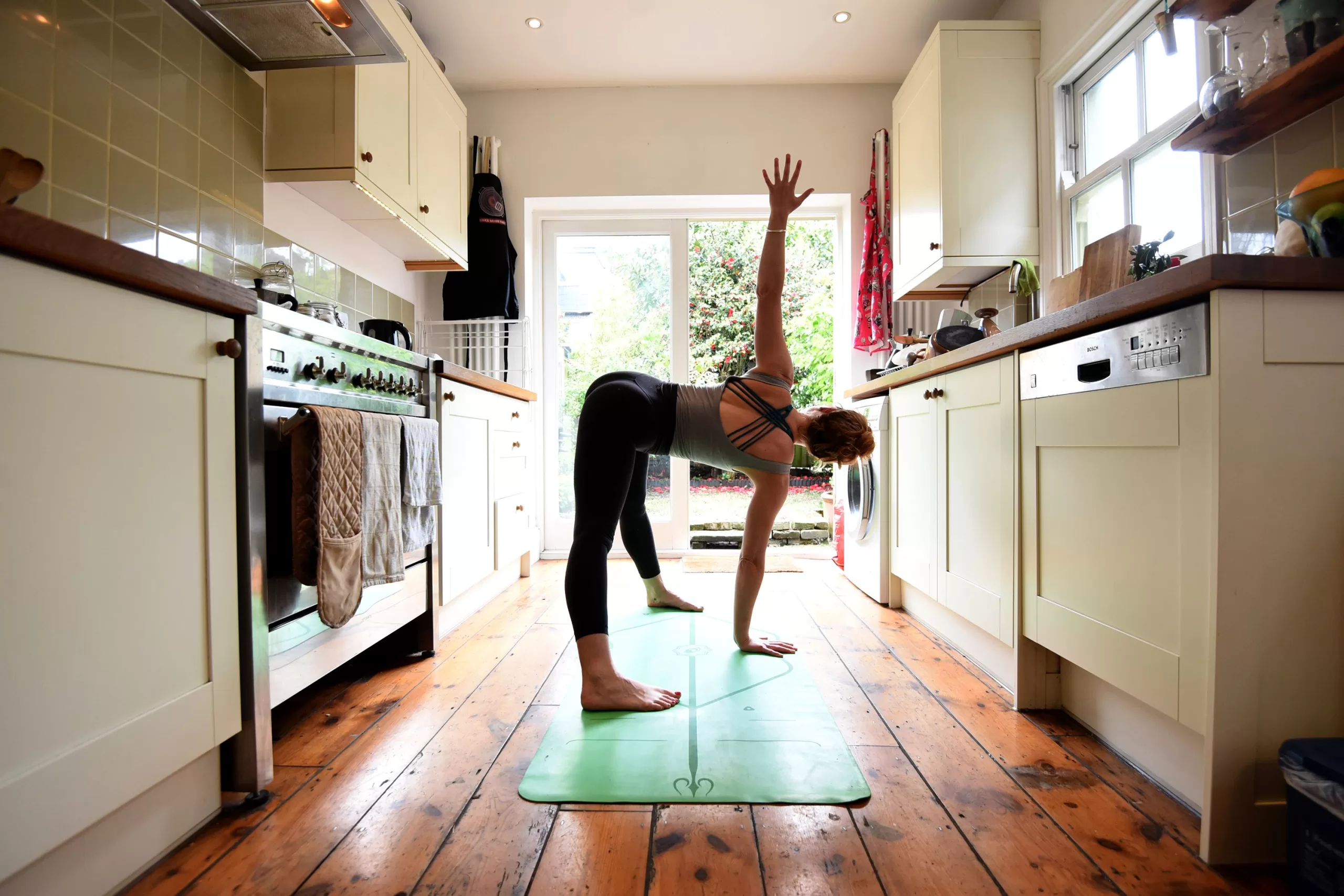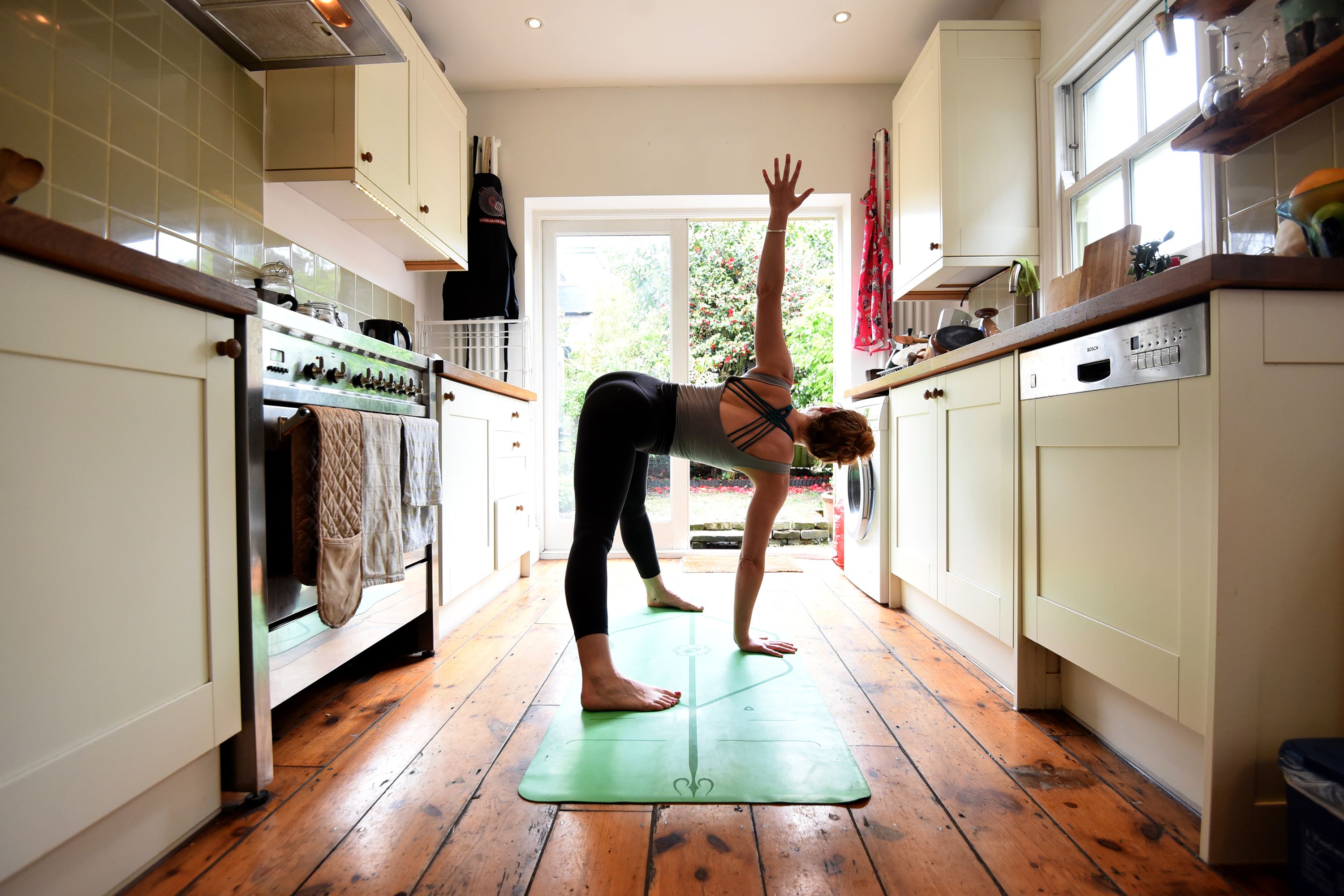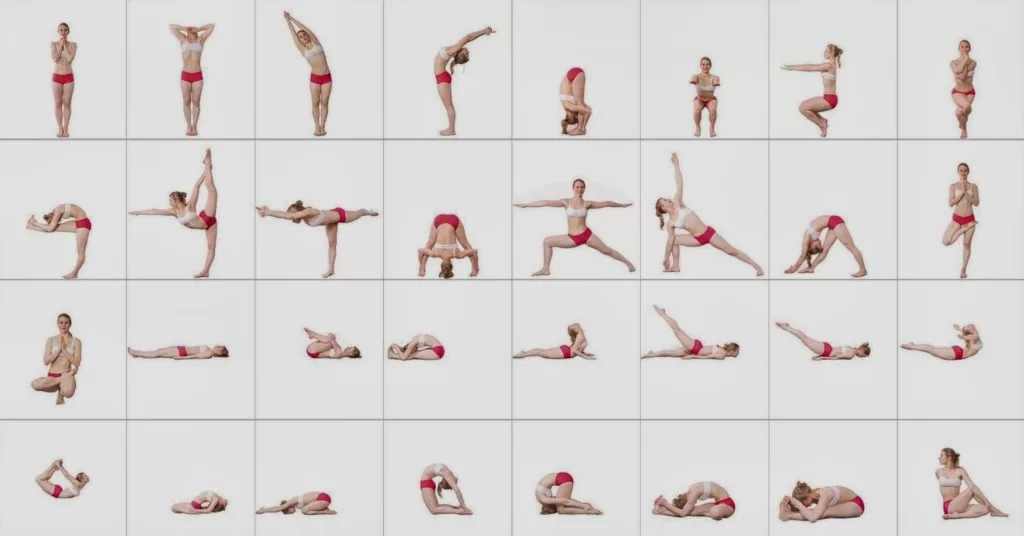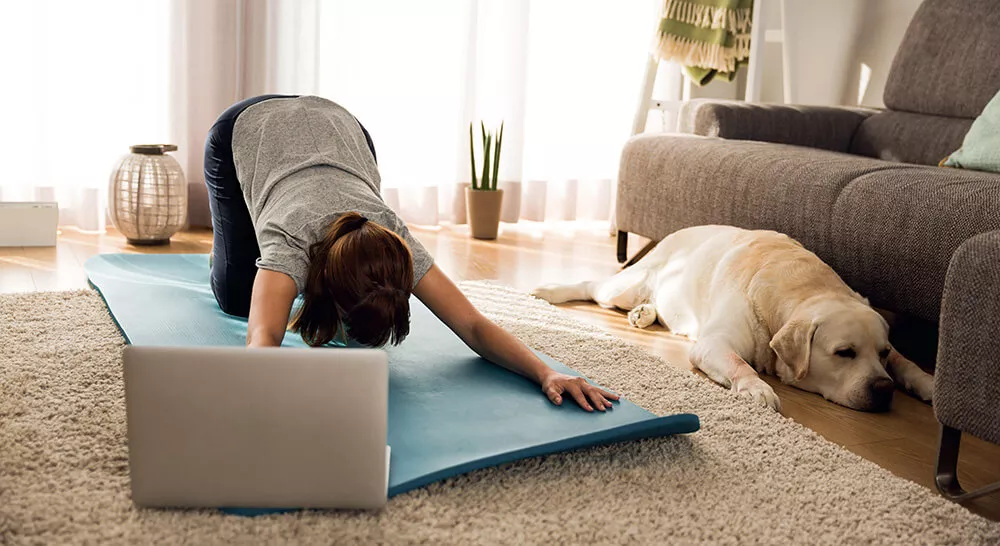
Can I Do Bikram Yoga At Home?
Bikram Yoga, a form of hot yoga, has gained immense popularity in recent years. This yoga practice involves a series of 26 postures and two breathing exercises, performed in a heated room. While many people enjoy the physical and mental benefits of Bikram Yoga, not everyone has the time or money to attend regular classes at a studio. As a result, many yoga enthusiasts wonder if it is possible to do Bikram Yoga at home.
The short answer is yes, you can do Bikram Yoga at home. However, there are several factors to consider before embarking on a home practice. In this article, we will explore the benefits and challenges of practicing Bikram Yoga at home, as well as provide tips and guidance to help you get started. Whether you are a seasoned yogi or a beginner, this article will help you decide if practicing Bikram Yoga at home is right for you.

Can I Do Bikram Yoga at Home?
Are you looking for a way to practice Bikram Yoga at home? While attending an in-person class with a certified instructor is the best way to learn this specific type of yoga, it is possible to practice at home. However, it’s important to keep in mind that Bikram Yoga is a challenging practice that requires consistency and discipline. In this article, we’ll explore everything you need to know about practicing Bikram Yoga at home.
1. Benefits of Bikram Yoga
Bikram Yoga is a type of hot yoga that involves a series of 26 postures and two breathing exercises. This practice is performed in a heated room that is typically set to 105 degrees Fahrenheit with a humidity of 40%. Bikram Yoga has numerous benefits, including:
- Improved flexibility and strength
- Increased cardiovascular health
- Reduced stress and anxiety
- Improved balance and coordination
- Increased mindfulness and concentration
It’s important to note that these benefits are only achieved through consistent and dedicated practice.
2. Setting Up Your Practice Space
When practicing Bikram Yoga at home, it’s important to create a dedicated space that is free from distractions. Choose a room with enough space to move around and set up your yoga mat. You’ll also need a space heater or a way to control the temperature in the room.
If you’re practicing on carpet, consider using a yoga mat with a nonslip surface. You may also want to invest in some props, such as blocks or straps, to help you get into certain postures.
3. Safety Considerations
Practicing Bikram Yoga at home can be safe as long as you take the necessary precautions. First, make sure you are in good physical health and have clearance from your doctor to practice. Stay hydrated by drinking water before, during, and after your practice.
It’s also important to listen to your body and not push yourself too far. Remember, Bikram Yoga is a challenging practice and it’s okay to take breaks or modify postures as needed.
4. Creating a Routine
To see the benefits of Bikram Yoga, consistency is key. Set aside a specific time each day or week for your practice. You may want to start with a shorter practice and gradually increase the length of your sessions.
When creating your routine, consider incorporating other elements of self-care, such as meditation or journaling, to enhance the benefits of your practice.
5. Using Online Resources
There are many resources available online to help you practice Bikram Yoga at home. Consider purchasing a DVD or subscribing to an online yoga class. However, it’s important to choose a reputable source and to make sure the instructor is certified in Bikram Yoga.
You can also find tutorials and instructional videos on YouTube or other online platforms. However, it’s important to use caution and not attempt any postures that are beyond your skill level.
6. The Importance of Breath
In Bikram Yoga, the breath is an essential part of the practice. It’s important to breathe deeply and evenly throughout each posture. Your breath should be audible, and you should be able to hear yourself inhale and exhale.
Practicing breath control can help you stay focused and calm during your practice. It can also improve your lung capacity and oxygen intake.
7. Alternatives to Bikram Yoga
If practicing Bikram Yoga at home isn’t feasible for you, there are many other types of yoga that offer similar benefits. Hatha Yoga, Vinyasa Yoga, and Power Yoga are all great options for improving strength, flexibility, and mindfulness.
You may also want to consider attending a local yoga class or hiring a private instructor to learn more about the practice and receive individualized instruction.
8. The Pros and Cons of Practicing at Home
Practicing Bikram Yoga at home has both its advantages and disadvantages. On the one hand, it’s convenient and can save you time and money. You can practice whenever you want, and you don’t have to worry about traveling to a studio.
On the other hand, practicing at home can be challenging without the guidance of an experienced instructor. You may also be more susceptible to distractions and interruptions.
9. Conclusion
In conclusion, practicing Bikram Yoga at home is possible with the right preparation and dedication. Remember to create a safe and distraction-free space, listen to your body, and stay consistent with your practice.
While practicing at home can be convenient, it’s important to seek guidance from a certified instructor to ensure you are practicing safely and effectively. With consistent practice, you can reap the benefits of Bikram Yoga and improve your overall health and well-being.
10. FAQs
Q. Can beginners practice Bikram Yoga at home?
A. It’s important for beginners to learn the proper technique and alignment of each posture from a certified instructor. However, it is possible for beginners to practice at home with caution and by starting with shorter sessions.
Q. What temperature should I set my space heater to?
A. The ideal temperature for practicing Bikram Yoga is 105 degrees Fahrenheit with a humidity of 40%. However, it’s important to start with a lower temperature and gradually increase it as you become more comfortable.
Q. Can I practice Bikram Yoga without a heated room?
A. The heat is an essential part of Bikram Yoga and helps to increase flexibility and promote detoxification. It’s possible to practice without a heated room, but you may not experience the full benefits of the practice.
Q. How often should I practice Bikram Yoga?
A. To see the benefits of Bikram Yoga, it’s recommended to practice at least three times a week. However, you can start with shorter sessions and gradually increase the frequency and duration of your practice.
Frequently Asked Questions
In this section, we will answer some of the most common questions related to practicing Bikram Yoga at home.
Can I Do Bikram Yoga at Home?
Yes, you can practice Bikram Yoga at home. However, it is essential to note that it is a challenging and intense form of yoga that requires proper guidance and supervision, especially if you are new to it. It is highly recommended that you take classes from a certified Bikram Yoga instructor before attempting to practice it at home.
Once you have learned the correct postures and breathing techniques, you can practice it at home. However, it is crucial to ensure that you have a suitable space and environment for practicing Bikram Yoga. You should have enough space to move your body freely and comfortably, and the room temperature should be around 105 degrees Fahrenheit with a humidity level of 40%.
What are the Benefits of Practicing Bikram Yoga at Home?
Practicing Bikram Yoga at home offers several benefits. Firstly, it provides convenience as you can practice it at any time and anywhere without having to travel to a studio. Secondly, it allows you to personalize your practice according to your needs and preferences. You can modify the postures or sequence according to your fitness level and goals.
Moreover, practicing Bikram Yoga at home can be a more affordable option than attending classes at a studio. You can save money on class fees, transportation, and other expenses. Lastly, practicing Bikram Yoga at home can help you develop self-discipline and focus, which can translate to other areas of your life as well.
What Equipment Do I Need to Practice Bikram Yoga at Home?
To practice Bikram Yoga at home, you will need a few essential pieces of equipment. Firstly, you will need a yoga mat that provides enough cushioning and grip. Secondly, you will need a towel to wipe off sweat and to cover your mat. You can also use a hand towel to dry your face and hands.
Thirdly, you will need a water bottle to stay hydrated during the practice. It is recommended that you drink plenty of water before, during, and after the practice to prevent dehydration. Lastly, you may also want to invest in a space heater or a fan to regulate the room temperature and humidity level.
What Precautions Should I Take While Practicing Bikram Yoga at Home?
While practicing Bikram Yoga at home, it is crucial to take certain precautions to ensure your safety and well-being. Firstly, you should consult your doctor before starting any new exercise regimen, especially if you have any existing medical conditions or injuries.
Secondly, you should start with the beginner’s sequence and gradually progress to the advanced level. Do not push yourself beyond your limits, and listen to your body’s signals. If you feel any pain or discomfort, stop immediately and take a break. Lastly, it is essential to maintain proper hygiene by cleaning your mat and towel regularly and washing your hands before and after the practice.
Are There Any Alternatives to Practicing Bikram Yoga at Home?
If you are not comfortable practicing Bikram Yoga at home, you can consider other alternatives. Firstly, you can attend classes at a local studio or gym. This will provide you with the guidance and support of a certified instructor and the motivation of practicing with others.
Secondly, you can try other forms of yoga that are less intense and can be practiced at home, such as Hatha Yoga, Vinyasa Yoga, or Yin Yoga. These forms of yoga offer similar benefits to Bikram Yoga, such as improving flexibility, strength, and relaxation. Lastly, you can also try online yoga classes or videos that provide step-by-step instructions and demonstrations for practicing yoga at home.
Bikram Yoga Class 30 Minutes. All 26 Bikram Yoga Postures
In today’s fast-paced world, the need for self-care has never been greater. And while yoga has been a popular form of exercise for centuries, Bikram Yoga has gained immense popularity in recent years. The good news is that yes, you can practice Bikram Yoga at home. With a few adjustments and proper guidance, you can experience the benefits of this challenging yet rewarding form of yoga in the comfort of your own space.
However, before you start practicing Bikram Yoga at home, it’s important to keep in mind that this form of yoga requires a lot of discipline, focus, and dedication. It’s crucial that you take the time to learn from experienced teachers, understand the poses and their benefits, and practice with mindfulness and body awareness. With consistent practice, patience, and a willingness to learn, you can achieve the same level of physical and mental strength that Bikram Yoga is known for, all from the comfort of your own home. So go ahead, roll out your mat, and get ready to sweat!

